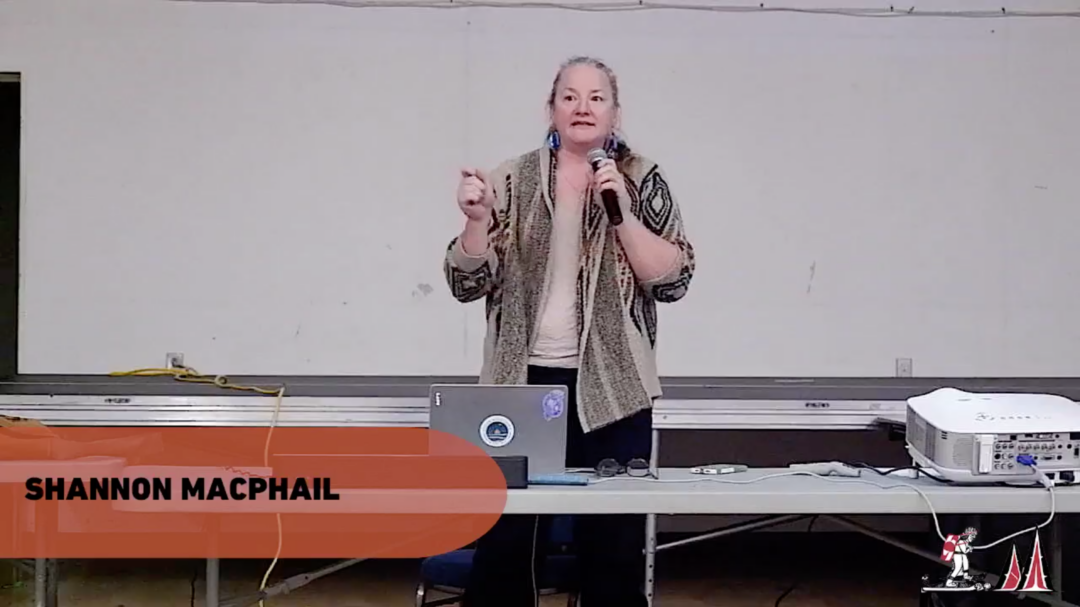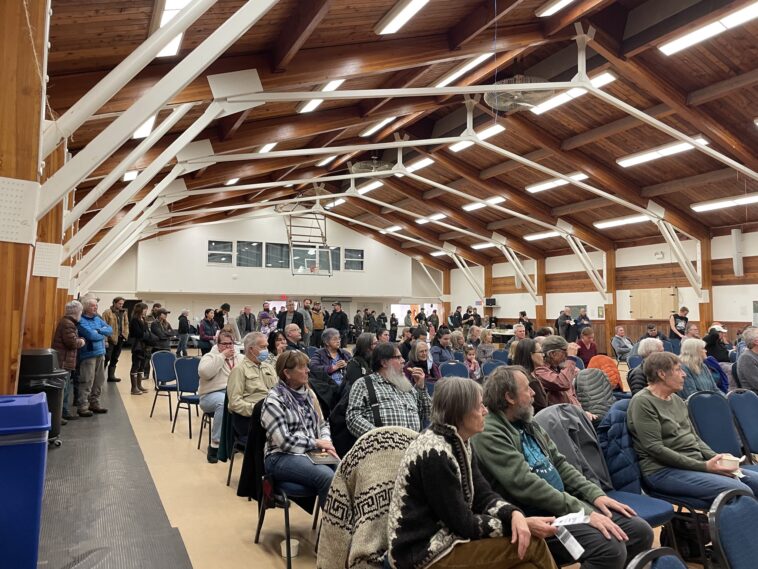The Nisga’a Nation, in collaboration with Texas-based partners Western LNG LLC, has announced the acquisition of a pipeline to serve their proposed Ksi Lisims Liquified Natural Gas (LNG) facility. TC Energy, the owner of the Prince Rupert Gas Transmission pipeline, is selling the 900-kilometre project that would run along BC’s north coast, though its route will need to be altered to run northwards to meet the $10 billion Ksi Lisims facility.
The pipeline project is permitted but has yet to be constructed. It was initially set to connect to a proposed Prince Rupert export facility that was eventually scrapped by the owner, Petronas, in 2017. The expanded pipeline route would run through the Babine, Suskwa, Kispiox and Skeena Rivers.
“In taking an equal ownership role in this pipeline, we are signalling a new era for Indigenous participation in the Canadian economy.”
Eva Clayton, president of the Nisga’a Lisims Government
“Today is a historic day for the Nisga’a Nation and represents a sea change in major industrial development in this country,” Eva Clayton, president of the Nisga’a Lisims Government, said in a news release. “In taking an equal ownership role in this pipeline, we are signalling a new era for Indigenous participation in the Canadian economy.”
The pipeline’s price tag has not been released by either party involved in the deal. TC Energy also built the Coastal Gas Link for the LNG Canada facility in Kitimat, which was budgeted at $6.6 billion and ballooned to $14.5 billion. That pipeline is now complete and will begin transporting LNG, which is cooled fracked gas, in 2025 when LNG Canada’s exporting project opens.

In December, The Skeena spoke with Clayton about the proposed Ksi Lisims facility, located on a remote site called Wil Milit on Pearse Island, close to the border with southeastern Alaska. The floating liquefaction project will produce 12 million tonnes of LNG annually for export to primarily Asian markets.
“Economic reconciliation is important not only for myself but the Nation because we have never had economic development within our territory for hundreds of years.”
Eva Clayton, president of the Nisga’a Lisims Government
Clayton feels the project is an important part of what she calls ‘economic reconciliation’ with First Nations. “Economic reconciliation is important not only for myself but the Nation because we have never had economic development within our territory for hundreds of years,” she told us. “The Indigenous people were left on the sidelines, while the prosperity and the resources from our land went south whether it was to Vancouver, Victoria, or East to Calgary, Toronto, and Ottawa.”
“Our project will be the world’s lowest emissions at net zero,” she stated, arguing that this project would be important for easing Asia’s reliance on coal by switching to BC’s LNG. “We want to be able to be a part of the solution to mitigate climate change,” she said at the time.
However, environmental experts have been critical of this claim, arguing that net-zero capability would require large amounts of hydroelectric power that BC Hydro simply does not have the infrastructure to provide. Additionally, many say that if the six new proposed fracked gas projects that are currently under review go forward, BC’s fossil fuel emissions will skyrocket past our 2030 goals. BC is far behind in its targets to reduce GHG emissions by 40% by 2030 – to date, rates have only decreased by 1%.
Additional concerns about the Ksi Lisims facility have been voiced by the Lax Kw’alaams First Nation, with the project’s current route running through their territory. Last year, their representatives sent a letter to the BC Environmental Assessment Office asking them to reject the proposal because “the project will induce BC’s failure to meet its climate targets as well as induce harmful climate-related adverse impacts on Lax Kw’alaams people.”

Communities along the Prince Rupert Gas Transmission Pipeline project are also very concerned about its environmental impact on wildlife, emissions, and the surrounding community. Shannon Lea McPhail, Co-Executive Director of the Skeena Watershed Conservation Coalition, led an open house near Hazelton in November 2023 to discuss the possible ramifications of the project.
She found that “people really want to work together to ensure this project doesn’t happen. The main concerns that I heard were obviously climate change and how LNG is not a solution to climate change, but a contributor.” She went on to say the people in the region have been already living with the devastating impacts of climate change, with recent droughts and wildfires affecting people’s homes and livelihoods.
“The Nass Estuary could be argued as the single most critical place for Nass salmon and Steelhead.”
Shannon Lea McPhail, Co-Executive Director of the Skeena Watershed Conservation Coalition
Ksi Lisims would be located near the Nass River Estuary and could endanger vulnerable salmon populations, putting food security and local economies at risk. “The Nass Estuary could be argued as the single most critical place for Nass salmon and Steelhead,” she explained at the time.
There has been widespread concern about the lack of sufficient oversight of LNG energy projects in the province. A 2023 exposé in The Narwhal revealed internal federal documents that told Fisheries and Oceans (DFO) regulators to “avoid monitoring” the construction of the Coastal Gaslink Pipeline, where an abnormal amount of fish were killed.
The Ksi Lisims facility is still undergoing the BC Environmental Assessment Agency’s review process after a public comment period that closed last December.




